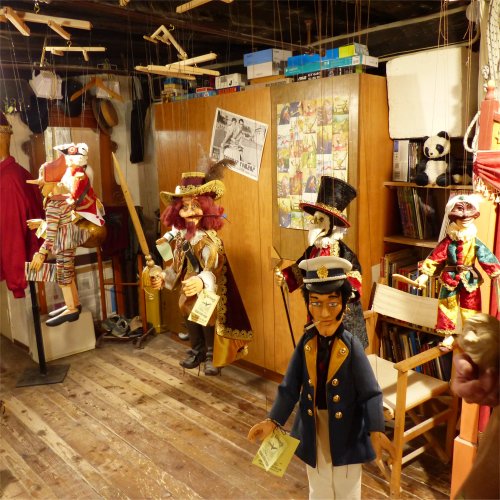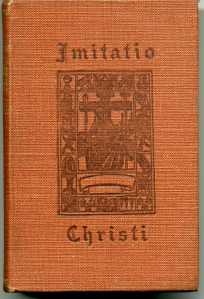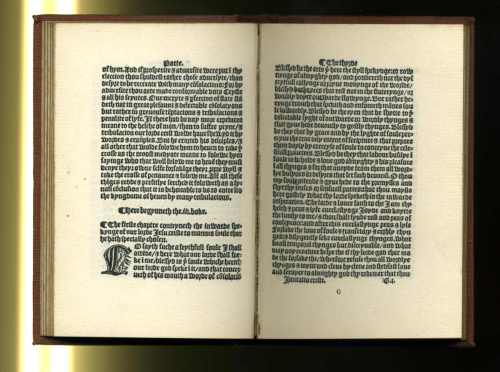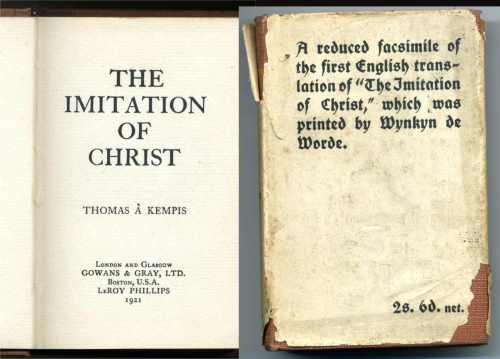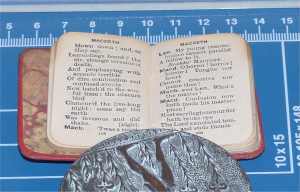
This venerable book dates from 1731. It is in excellent condition, binding intact, cover somewhat scratched, pages complete, printing clear. It is a sort of 18th century Doctors Book of Home Remedies, containing hundreds of ‘cures’ for 18th century ailments.
The Authors

It is credited to John Moncrieff, with an addition to the Appendix by Archibald Pitcairn. Thomas Heriot is the bookseller who funded the publication. The Heriot family were well known in Edinburgh. An earlier Heriot, George, founded a school in the 17th century that continues to this day.
The following is from The House of Moncrieff of 1890, which I found on archive.org.
John Moncrieff of Tippermalloch, the son of Hugh Moncrieff (a younger brother of Sir John Moncrieff, first Baronet), by his wife Isabel, daughter of Hay of Megginch, who thus became fifth Baronet. He succeeded to the estate of Tippermalloch under a conveyance by William Moncrieff of Tippermalloch, who, according to Playfair, died without issue about the year 1655.
Besides being distinguished as a medical practitioner, he was the author of a work entitled ‘ The Poor Man’s Physician, or Receipts,’ of which the only edition now to be found appears to have been printed from a copy delivered by himself to the Marchioness of Atholl. He married, about 16S0, Nicholas, daughter of Moncreiff of Easter Moncreiff, by whom he had a numerous family of sons and daughters, of whom (according to Playfair) all the former, except Hugh, died before himself.
The second contributor, Archibald Pitcairn, was an eminent doctor in Edinburgh; perhaps, in his time, the pre-eminent doctor in Scotland. He is credited with being a founding father of the famous Edinburgh Medical School. He died in 1713, some 18 years before the publication of this book. He has an extensive entry in Wikipedia, and a number of his books are still in print in facsimile.
The Treatments
The treatments indicate how far medicine has progressed in 300 years. Occasional glimmers of sense appear amid the horrendous prescriptions. For example, in the treatment for scurvy below, two or three ingredients actually contain vitamin C, which is the known cure for scurvy, but the preparation almost guarantees that none will be left in the final decoction.
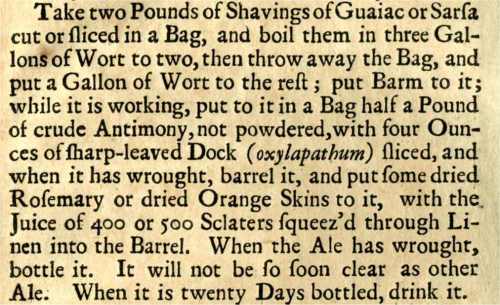
The wort is a barley mash, the precursor for beer, guaiac is a tree resin, sarsa is the flavouring of sarsaparilla, antimony compounds are mostly poisonous, and the ‘sclaters’ referred to are woodlice, which are said to taste of strong urine.
Next, part of the treatment for smallpox:

And a few treatments for colic, some of which (the herbal ones) are still used for gastric disturbances.

And consumption, or TB, as we now know it. Click on the image for a detailed view.
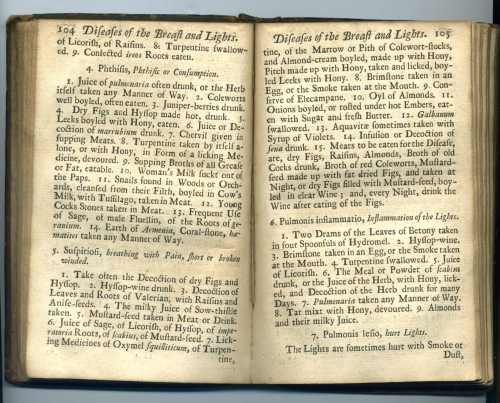
Conclusion
An interesting book, with some application to medical history, but the prescriptions are taken at your own risk, as the authors cannot now be sued for malpractice.



